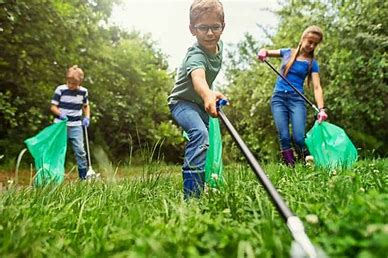

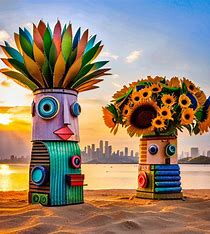
Here are some crafty and eco-friendly kids’ activities that will spark creativity while promoting sustainability:
1. Recycled Paper Crafting
- Materials: Old newspapers, magazines, scrap paper, and glue.
- Activity: Have kids tear up old papers and create collages, greeting cards, or paper animals. They can also make their own recycled paper by soaking, blending, and pressing paper scraps to create new sheets.
- Eco Lesson: Teaches the importance of reusing and recycling paper to reduce waste.
2. Nature Art
- Materials: Leaves, flowers, sticks, stones, pinecones, etc.
- Activity: Take a nature walk and gather natural materials. Back home, kids can create art by gluing leaves to paper, making flower presses, or arranging rocks into fun designs.
- Eco Lesson: Encourages kids to appreciate the environment and learn about natural materials.
3. Upcycled T-Shirt Bags
- Materials: Old T-shirts, scissors, fabric markers (optional).
- Activity: Cut old T-shirts to create no-sew bags. Kids can design and personalize them with fabric markers.
- Eco Lesson: Teaches the importance of reducing textile waste and reusing old clothing.
4. Homemade Bird Feeders
- Materials: Pinecones, peanut butter (or lard), birdseed.
- Activity: Spread peanut butter or lard on pinecones and roll them in birdseed. Hang them outside to attract local wildlife.
- Eco Lesson: Encourages kindness to animals and teaches about wildlife care.
5. DIY Seed Bombs
- Materials: Wildflower seeds, clay powder, compost, water.
- Activity: Mix the ingredients to form little balls and let them dry. These can be tossed into gardens or empty lots to grow flowers.
- Eco Lesson: Teaches kids about planting for pollinators and how to make the environment greener.
6. Plant a Mini Garden
- Materials: Small pots, seeds, soil, and old containers (like yogurt cups or egg cartons).
- Activity: Have kids plant flowers, herbs, or vegetables in containers. Encourage them to water and care for their plants.
- Eco Lesson: Teaches kids about plant life cycles, sustainability, and the importance of caring for nature.
7. Homemade Playdough (Eco Version)
- Materials: Flour, salt, water, vegetable oil, cream of tartar, food coloring (optional).
- Activity: Mix up a batch of homemade playdough using simple ingredients. Kids can mold and shape the dough into whatever their imagination desires.
- Eco Lesson: Shows how you can make your own toys with non-toxic, eco-friendly ingredients.
8. Eco-Friendly Bubble Solution
- Materials: Water, dish soap (preferably eco-friendly), a touch of sugar.
- Activity: Mix ingredients to create a bubble solution. Use natural items like a stick or a piece of yarn to make bubble wands.
- Eco Lesson: Encourages the use of safe, non-toxic products for outdoor play.
9. Nature Scavenger Hunt
- Materials: Printable scavenger hunt list or just a list of things to find.
- Activity: Create a list of natural items to find outside (like a specific leaf, rock, or flower). Kids can explore and check off items as they find them.
- Eco Lesson: Promotes appreciation for the natural world and being outside in nature.
10. Upcycled Crayon Art
- Materials: Old, broken crayons, a muffin tin, and an oven.
- Activity: Melt broken crayons in a muffin tin to create new multicolored crayons. Once melted and cooled, kids can use them for drawing or coloring.
- Eco Lesson: Teaches kids to repurpose old items and reduce waste.
11. Plastic Bottle Planters
- Materials: Empty plastic bottles, soil, seeds, scissors.
- Activity: Cut the plastic bottles in half, create drainage holes in the bottom, and use them as mini planters for herbs or flowers.
- Eco Lesson: Teaches about repurposing plastic waste and growing plants.
12. Paper Roll Binoculars
- Materials: Empty toilet paper rolls, tape, string, markers, or stickers.
- Activity: Decorate the paper rolls and then tape them together to make binoculars. Kids can use these during nature walks or wildlife watching.
- Eco Lesson: Encourages creativity and teaches the importance of reusing materials.
By using recycled materials, nature items, or eco-friendly supplies, these activities are a great way to have fun while making a positive impact on the environment!
- Earth-Encrusted Candle This tutorial tells you to make the candle in the dirt, but I think it would also look so awesome if you made it in the sand.
1. Earth encrusted candle.
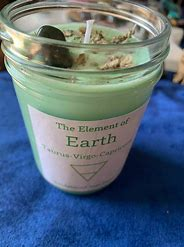
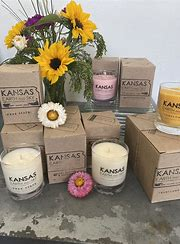
Although this video instructs you to construct the candle in the dirt, I believe that making it in the sand would also look fantastic.
2. Star Wars Felt Sluffies.
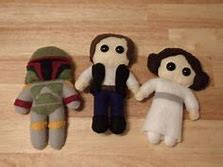
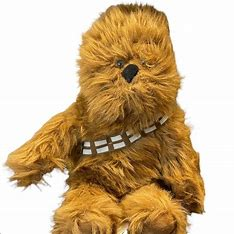
It sounds like you’re referring to some adorable “Star Wars” felt creations, possibly small plushies or “sluffies,” made out of felt! These would be cute, hand-crafted items featuring beloved Star Wars characters, designed with felt fabric and other materials to create a soft, plush appearance.
For example, you could make felt versions of characters like:
- Yoda – Tiny, wise, and green, Yoda could be made from green felt with little brown robes and big, wise eyes.
- Darth Vader – A small version of the iconic villain, using black felt for his suit and helmet, with a touch of red felt for his lightsaber.
- BB-8 – A round and charming droid made from white and orange felt, with small black felt circles for the droid’s features.
- Chewbacca – A furry felt creation with brown and beige tones, with small touches of black for his bandolier and eyes.
Would you like to know how to make your own Star Wars felt sluffies, or are you thinking of something else entirely.
3. Puzzle Blocks.
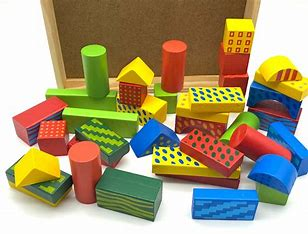
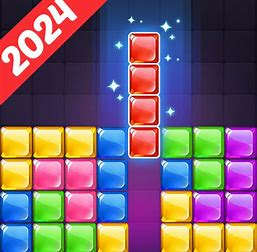
It sounds like you’re asking about “puzzle blocks” related to Star Wars Felt Sluffies, or maybe you want a general idea of puzzle blocks in a crafting or toy context. I’ll cover both possibilities:
1. Star Wars Felt Puzzle Blocks
If you’re combining Star Wars and felt with puzzle blocks, one idea could be creating small felt blocks that can be arranged to form various Star Wars scenes or characters. These blocks could have a picture on each side or snap together, with designs of characters like Darth Vader, Luke Skywalker, or the Millennium Falcon. Children (or collectors) could play and build different scenes by rearranging the blocks.
2. Traditional Puzzle Blocks
Puzzle blocks are often simple wooden or foam cubes that are designed to connect together, often with pictures or numbers on each side. These are great for educational play for young kids or for use in various games. For a Star Wars-themed puzzle block set, each block might have different Star Wars characters, ships, or planets on each side.
Would you like instructions on how to make felt puzzle blocks, or are you thinking of something else entirely? Feel free to clarify!
4. Enqrave Rocks.
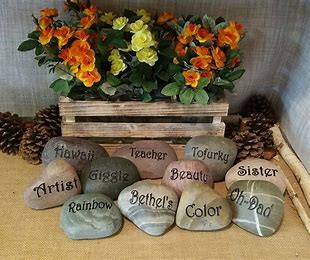
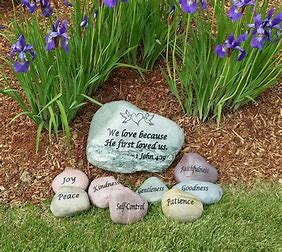
It seems like you meant “Engrave Rocks,” perhaps referring to engraving designs, names, or characters onto rocks for decoration, gifts, or crafting projects. Engraving rocks can be a fun and creative activity. Here’s how you can approach it:
How to Engrave Rocks:
- Choose the Right Rock: Select smooth, flat rocks or stones for easy engraving. River rocks or stones with a solid texture work well.
- Design Your Artwork: You can sketch your design on paper first. If you want to engrave Star Wars characters, for example, you might choose images of Yoda, Darth Vader, or the Millennium Falcon.
- Use the Right Tools:
- Dremel Tool: This is a rotary tool with various bits that allows for detailed engraving. You can adjust the speed and use different tips to carve into the rock.
- Carving Tools: Manual tools like small chisels or a rock engraving kit can also be used for simpler designs.
- Pencil or Chalk: Lightly draw your design on the rock’s surface to guide the engraving process.
- Engrave the Design: Using your tool, carefully follow your sketch on the rock’s surface. Take your time and work slowly, especially if you’re new to rock engraving.
- Add Color (Optional): After engraving, you can add paint or markers to highlight the design. Acrylic paints work well for this.
- Sealing the Rock (Optional): Once you’re happy with your engraving and coloring, you can seal the rock with a clear acrylic sealer to protect the design and give it a nice finish.
Fun Ideas for Engraving:
- Star Wars Rocks: Engrave iconic characters or quotes like “May the Force be with you” onto the rocks.
- Personalized Gifts: You could engrave names, messages, or special dates on rocks as personalized gifts.
- Nature-Themed Designs: Engraving flowers, animals, or landscapes is also a popular way to make unique rock art.
Let me know if you need tips on tools or specific designs!
5. Candy Wrapper picture Frame.

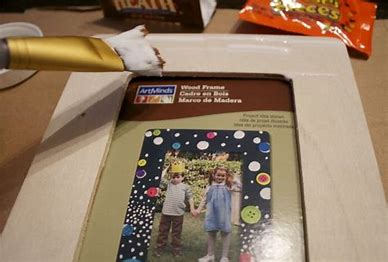
A Candy Wrapper Picture Frame is a creative and eco-friendly way to repurpose candy wrappers into a unique and colorful frame for your photos. Here’s how you can make one:
Materials Needed:
- Candy wrappers (variety of colors and designs depending on your taste)
- Picture frame (either a plain wooden or plastic frame)
- Scissors
- Glue (hot glue gun or craft glue)
- Ruler (optional for precision)
- Mod Podge or clear varnish (optional for sealing)
Instructions:
- Prepare the Candy Wrappers:
- Collect your favorite candy wrappers. You can choose wrappers in a variety of colors and patterns to create a fun, eclectic look.
- If the wrappers are larger, you can cut them into smaller strips or squares, depending on the design you want.
- Cut the Candy Wrappers:
- Cut the candy wrappers into strips (about 1-2 inches wide) or squares. You can adjust the size based on how you want to decorate the frame.
- You can also choose to overlap wrappers or place them side by side for a patchwork design.
- Prepare the Frame:
- Take your plain picture frame and remove any glass or backing if needed. Clean the frame to make sure it’s free of dust or dirt.
- Start Gluing the Wrappers:
- Begin gluing the strips or squares of candy wrappers to the frame. You can start from the outer edges and work your way in, or cover one side at a time.
- Lay the wrappers in a pattern that you like (e.g., horizontal or vertical stripes, random patchwork, or a more structured design like a checkerboard).
- Continue gluing until the entire frame is covered.
- Seal the Frame (Optional):
- Once the wrappers are glued down, you can apply a coat of Mod Podge or a clear varnish over the top. This helps protect the frame and gives it a smooth, finished look.
- Let it dry completely.
- Add Your Photo:
- Once everything is dry, place your photo back into the frame and secure it. Now, you have a colorful, fun, and environmentally-friendly picture frame made from candy wrappers!
Tips:
- If you want to add extra texture or interest, you can alternate the way you position the wrappers (e.g., slightly crinkled for a 3D effect).
- You could also add embellishments like beads, buttons, or glitter for a little extra flair.
This project is a fun way to recycle candy wrappers and create something functional and decorative for your home! Let me know if you’d like more details or variations on the design!
6. DIY Body Glitter From Healthy Ingredients.
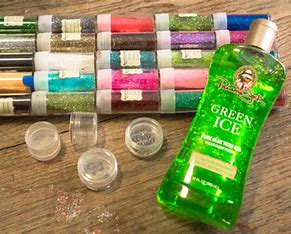
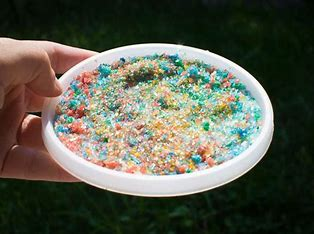
Creating your own DIY body glitter with healthy ingredients is a fun and natural way to sparkle without using harsh chemicals. Here’s a simple and safe method to make body glitter using ingredients you likely already have at home:
Materials Needed:
- Natural Mica Powder (available online or at craft stores; mica powder is a natural mineral that comes in various colors and is commonly used for body-safe cosmetics)
- Aloe Vera Gel (acts as a soothing base and helps the glitter stick to the skin)
- Coconut Oil or Sweet Almond Oil (optional, for added moisture)
- Organic Vitamin E Oil (optional, for skin benefits)
- Small jar or container (for mixing and storing your glitter)
- Eco-friendly Glitter (optional, for extra sparkle, but natural mica powder alone can give a nice shimmer)
Instructions:
- Prepare the Base:
- Start by choosing your base. Aloe vera gel is ideal because it’s light, hydrating, and provides a sticky texture for the glitter to adhere to. You can also use coconut oil or sweet almond oil for a richer, more moisturizing base.
- If you prefer a more moisturizing body glitter, mix 1 tablespoon of coconut oil with 1 tablespoon of aloe vera gel. This will make it more nourishing while still holding the glitter in place.
- Add Mica Powder:
- Add a small amount of mica powder to your base (about 1 teaspoon at first). You can experiment with the amount depending on how intense you want the glitter to be. Mica comes in a variety of shades, so you can choose a color that complements your skin tone or your preferred look (like gold, silver, pink, or even iridescent shades).
- Mix the mica powder thoroughly into the base. You should see a smooth, sparkling consistency.
- Optional: Add Vitamin E Oil:
- If you’d like to add some extra skin nourishment, you can mix in a few drops of Vitamin E oil. This will add moisture and help your glitter stay on your skin longer.
- Add Eco-friendly Glitter (Optional):
- For a more noticeable sparkle, you can add a small amount of eco-friendly glitter. This step is entirely optional since mica powder already provides a natural shimmer, but you can experiment with different textures for fun.
- Store the Glitter:
- Once your glitter is mixed, transfer it to a small jar or container with a lid for easy application later.
- You can use a small makeup brush, your fingers, or a cotton pad to apply the glitter to your body wherever you want a little extra shine.
- Apply and Shine:
- Simply apply the homemade body glitter to your arms, legs, décolletage, or anywhere you want a touch of sparkle.
- Enjoy your glowing, healthy-looking skin with no harsh chemicals!
Tips:
- Test on a small patch of skin before applying it to larger areas to ensure you’re not allergic to any of the ingredients.
- Adjust the consistency by adding more coconut oil or aloe vera gel if it’s too thick, or more mica powder if you want more shine.
- This glitter works great for special events, festivals, or just as a fun, everyday shimmer!
By using these healthy ingredients, you get a customizable, natural body glitter that’s gentle on your skin. Enjoy your natural glow.
7. Fabric covered picture Frame.
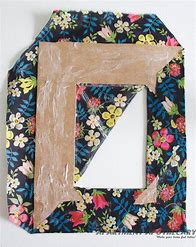
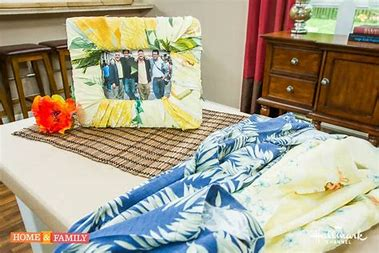
Creating a fabric-covered picture frame is a fun and easy DIY project that allows you to customize your frame to match any decor. You can use any fabric you like, whether it’s patterned, solid, or textured, to add a unique touch to your photos. Here’s a step-by-step guide on how to make your own:
Materials Needed:
- Plain wooden or cardboard picture frame (you can also use an old frame you want to repurpose)
- Fabric (enough to cover the frame; cotton, linen, or felt works well)
- Scissors
- Hot glue gun and glue sticks (or craft glue)
- Ruler (optional for precise measurements)
- Craft knife (optional, for trimming edges neatly)
- Decorative embellishments (optional, like buttons, ribbon, or lace)
Instructions:
- Choose and Prepare the Frame:
- If you’re using an old frame, remove the backing and glass (if any) to just keep the frame. If the frame has a picture inside, you can reuse the same size photo or cut a new one to fit.
- Measure the dimensions of the frame to know how much fabric you’ll need to cover it.
- Cut the Fabric:
- Lay your fabric flat on a surface and place the frame on top of it.
- Cut the fabric about 2-3 inches larger than the frame on all sides. This will give you enough excess fabric to fold over the edges of the frame.
- Attach the Fabric to the Frame:
- Start by applying hot glue to one side of the frame. Lay the fabric over it, making sure it’s centered, and press the fabric firmly to stick.
- Move to the next side of the frame and apply glue, pulling the fabric taut so it’s smooth and wrinkle-free. Fold the corners neatly like wrapping a gift for a clean, sharp look. You can apply a little extra glue to secure the corners.
- Continue gluing the fabric on all four sides, making sure to keep the fabric tight and smooth over the frame.
- Trim the Excess Fabric:
- Once all sides are glued down, trim any excess fabric along the edges, leaving just enough to fold over the back of the frame.
- If you’re using a cardboard frame, you can use a craft knife for a cleaner cut.
- Secure the Back:
- If you’re using a wooden frame, glue the fabric down at the back to prevent it from lifting.
- If needed, attach a new backing to the frame to hold your photo in place. You can use cardboard or a pre-made frame backing, which can be found at most craft stores.
- Decorate (Optional):
- For an added touch, you can embellish your fabric-covered frame with buttons, ribbon, lace, or even fabric flowers. Use a hot glue gun to attach these decorative pieces along the edges or corners of the frame.
- You could also add a fabric flower or a bow at the top or bottom for a whimsical, charming look.
- Insert Your Photo:
- Once your frame is completely dry and decorated, insert your photo into the frame. Secure the backing and place it in a spot where it will add some lovely flair!
Tips:
- Choosing Fabric: If you want a more durable frame, go for a sturdier fabric like denim or canvas. For a more elegant look, try using velvet or silk fabric.
- Personalization: If you’re creating this frame as a gift, consider personalizing the fabric choice based on the recipient’s tastes. You could use fabrics with their favorite colors, patterns, or even themed fabrics like florals or stripes.
- No-sew Option: This project doesn’t require any sewing, so it’s quick and easy even if you’re not into sewing.
This fabric-covered picture frame is a simple yet beautiful way to customize your decor and add a personal touch to your photos!
8. No Sew Felt Owl.
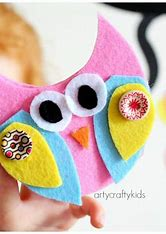
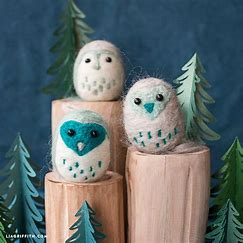
Making a no-sew felt owl is a fun and easy DIY project that allows you to create a cute, colorful owl decoration using just felt, glue, and a few other basic materials. Here’s how you can make your own no-sew felt owl:
Materials Needed:
- Felt sheets (in various colors, such as brown, yellow, orange, white, and other decorative colors for the wings, eyes, etc.)
- Fabric glue (or a hot glue gun)
- Scissors
- Googly eyes (optional)
- Buttons or beads (for extra decoration)
- Small pieces of ribbon or felt (optional, for embellishments like bows or feet)
- Cardboard or felt for a base (optional, for making the owl more sturdy)
Instructions:
- Cut the Felt for the Body:
- Start by cutting out the body of the owl. You can cut a large oval or egg-shaped piece of brown or another main color for the owl’s body.
- Cut a second, smaller piece for the belly in a lighter color, like white or yellow. This will be glued onto the body to create the belly.
- Cut the Wings:
- Cut out two wing shapes from a piece of felt. These can be simple oval or leaf shapes, depending on your preferred wing style.
- Attach the wings to the sides of the owl’s body using fabric glue. You can place them slightly tilted so they look more natural.
- Make the Eyes:
- For the eyes, cut out two circles from white felt (slightly larger than you want the finished eyes to be). Then cut two smaller circles from black felt for the pupils. If you have googly eyes, you can simply glue them onto the body.
- Glue the white felt circles on top of the owl’s body where you want the eyes to be. Then glue the black circles on top of the white ones to form the pupils.
- Create the Beak:
- Cut a small triangle from orange or yellow felt to make the beak. Glue the triangle onto the center of the owl’s face, right between the eyes.
- Make the Ears (Optional):
- For the owl’s ears, cut two small triangle shapes from a darker felt (like brown or black).
- Attach the triangles to the top of the owl’s head, gluing them to either side to create the ear tufts. You can fold the top part of the triangles inward slightly for a more 3D effect.
- Add the Feet (Optional):
- To make the feet, cut two small V-shaped pieces of orange or yellow felt. These can be glued at the bottom of the owl’s body, or you can make small, simple feet shapes using felt and glue them on.
- Embellishments (Optional):
- To make your owl extra cute, you can add buttons, beads, or even small felt flowers for extra decoration around the owl’s body or wings.
- You could also add a small bow made from ribbon at the top or side of the owl’s head for a fun touch.
- Finish the Owl:
- Once everything is glued in place and dried, you can add a piece of string or ribbon at the top of the owl to hang it up as a decoration or ornament. If you want the owl to be free-standing, you can glue it onto a small cardboard or stiff piece of felt to create a solid base.
Tips:
- Color Variations: Don’t be afraid to get creative with colors! You can make a brightly colored owl or even use patterned felt for a unique design.
- Personalization: You can personalize your owl by adding a small heart, initials, or any other decoration you prefer.
- Size Adjustments: Depending on how large or small you want your owl, you can adjust the sizes of the felt pieces.
This no-sew felt owl is a great way to create a cute and fun decoration, whether it’s for a room, a gift, or a party! Enjoy your crafting.
9. Sand Art.
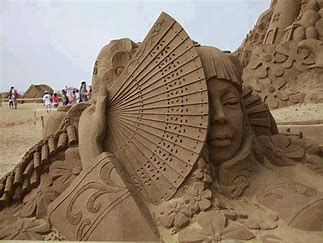

Sand art is a fun and creative craft project where you can use colored sand to create beautiful patterns and designs. It’s an easy activity that kids and adults can enjoy, and it allows for endless creativity. Here’s a guide on how to make your own sand art:
Materials Needed:
- Colored sand (you can buy pre-colored sand or make your own by mixing sand with food coloring)
- Containers (glass bottles, jars, or any transparent container to display the sand art)
- Funnel (optional, helps pour sand neatly)
- Paper or a tray (to catch any spilled sand)
- Spoons or small scoops (to transfer sand)
- Pencils or small sticks (for creating designs)
How to Make Sand Art:
1. Prepare the Colored Sand:
- If you’re using pre-colored sand, you can skip this step.
- To make your own colored sand, take regular sand and mix it with food coloring. Place a few tablespoons of sand into a ziplock bag or container, add a few drops of food coloring, and shake it up until the sand is evenly colored. Let the sand dry for a few hours before using it.
2. Prepare Your Container:
- Choose a transparent container like a glass jar, bottle, or even a clear plastic bottle. The container should have a wide enough opening for pouring the sand easily.
- Make sure the container is clean and dry.
3. Start Layering the Sand:
- Begin by adding the first color of sand to your container. You can use a funnel to make it easier, or just pour it carefully using a spoon.
- Pour a small amount of sand and tap the container lightly to level the layer. You can create thick or thin layers depending on the effect you want.
- Add different colors of sand by repeating this process, layering each color one after the other. You can make a pattern or mix the colors to create a unique design.
4. Create Patterns and Designs:
- To create interesting patterns, you can shake the container gently to move the sand around, or use pencils, sticks, or spoons to create designs in the sand. For example, you can use a stick to create wavy lines or spirals in the sand.
- If you want to create a rainbow effect, alternate the colors in the order of the rainbow, or try a zigzag pattern with different shades.
5. Finish Your Art:
- Once you’re happy with the layers, leave the sand art as-is, or you can experiment with more detailed designs, such as adding a picture or a shape by using different colors in specific areas.
- Some people like to seal their sand art by spraying a clear adhesive spray over the top to keep the layers in place, but this step is optional.
6. Display:
- Your sand art is now ready to be displayed! You can place the jar or bottle on a shelf, desk, or table to showcase your beautiful creation.
Tips:
- Experiment with textures: You can add different textures by using coarser or finer sand, or even mixing in glitter for extra sparkle.
- Use different shapes: Try using different-shaped containers like hearts, cylinders, or even mason jars to create a unique design.
- Sand Art as a Gift: You can make personalized sand art gifts by choosing colors that represent the recipient’s favorite colors or themes.
Making Sand Art in Bottles:
If you’re working with bottles, here’s a fun trick:
- Bottle designs: Use the funnel to add layers of colored sand into the bottle, then gently shake the bottle to make the sand settle and form patterns. You can even use a skewer to make designs by creating small grooves in the sand, which will show up as textured patterns.
Variations of Sand Art:
- Sand Art Cards: Instead of using a bottle, you can apply glue to a piece of paper or cardstock and sprinkle sand on top to create textured designs.
- Sand Bottles with Drawings: You can use tape to create stencils or patterns on the outside of your bottle, then carefully peel the tape off after adding the sand.
Sand art is a wonderful activity for creating beautiful pieces of art with simple materials, and the best part is that each piece is unique! Enjoy creating your colorful sand masterpiece!
10. Cardboard Ship.
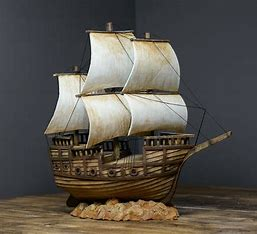
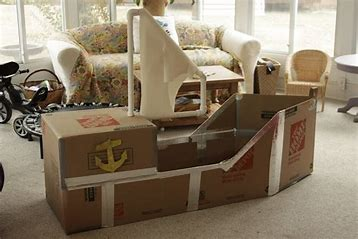
Creating a cardboard ship is a fun and easy craft project, perfect for kids and adults alike. It can be used as a decoration, a toy, or even a themed centerpiece. Here’s a step-by-step guide on how to make a simple cardboard ship:
Materials Needed:
- Cardboard (preferably a sturdy type, like from a cereal box or large cardboard sheets)
- Scissors or a craft knife (for cutting)
- Glue (hot glue gun works best for strong holds, but craft glue also works)
- Markers, paints, or colored paper (for decoration)
- Ruler (for measuring)
- Pencil (for marking)
- String or yarn (optional, for making sails or rigging)
- Paper or fabric (optional, for sails)
Instructions:
1. Plan Your Ship Design:
- First, think about the size and shape of the ship you want to make. You can design a simple boat shape or get creative with a more detailed pirate ship or sailing vessel.
- Sketch the basic outline of your ship on a piece of paper first, so you have a good idea of how it will come together.
2. Cut the Ship’s Base:
- Take a large piece of cardboard and draw the shape of the bottom of the ship. You can make it a simple oval or rectangle, or a more curved hull shape for a boat-like design.
- Once you’ve drawn the shape, use scissors or a craft knife to carefully cut it out. This will be the bottom of the ship.
3. Create the Ship’s Sides:
- Cut two long pieces of cardboard that will serve as the sides of the ship. These can be rectangular or curved, depending on the shape of your ship.
- To make the sides look more like a real ship, cut one side a bit taller than the other to give it the appearance of a hull. You can also add slits or notches to make the sides curve in a way that gives the ship more shape.
4. Attach the Sides to the Base:
- Use glue to attach the side pieces to the base of the ship. Hold them in place until they are securely glued.
- You may want to add extra cardboard reinforcements underneath the sides, especially if your ship is large, to ensure it holds together well.
5. Build the Ship’s Deck:
- Cut a piece of cardboard the same size as the top of the ship’s base to create the deck. This will be the top part of your ship where things like the wheel, sails, or flags can be attached.
- Glue this piece on top of the sides, making sure everything is aligned properly.
6. Create the Ship’s Sails:
- If you want to make a sailing ship, you can create sails using fabric, paper, or felt.
- Cut two or three sail shapes (triangles or rectangles) from your material. Attach these sails to sticks or skewers to serve as the ship’s masts.
- Glue the masts vertically on the deck, and attach the sails to them using glue or string.
- You can also use string or yarn to create rigging for the ship.
7. Add Additional Details:
- Cabins and Deck Features: Cut out small pieces of cardboard to create cabins, windows, and other features on the ship’s deck. These can be glued to the sides or the top of the ship.
- Flag: Cut a small piece of fabric or paper to create a flag. Attach it to the top of one of the masts.
- Pirate Details: If you’re making a pirate ship, you can draw or cut out pirate faces, skulls, or other symbols and glue them to the ship.
8. Paint and Decorate:
- Once the ship is assembled, you can decorate it. Use paint, markers, or colored paper to give your ship a colorful look. You can paint it to look like wood, add stripes, or even make it look like a pirate ship with skulls and crossbones.
- Add any final touches, such as small paper flags, ropes, or even small toy figurines to represent the crew.
9. Let it Dry:
- Allow the glue and paint to dry fully before using or displaying the ship.
Tips:
- Reinforcement: If your cardboard is flimsy, you can reinforce it by gluing multiple layers together.
- Customization: Feel free to add other creative details like a rudder, cannon (for a pirate ship), or a wheel for steering.
- Size: You can adjust the size of the ship depending on whether it’s a tabletop model or a larger piece to play with.
Final Thoughts:
This cardboard ship project is simple yet customizable. Whether you’re crafting with kids or doing it for a fun decoration, it’s a great way to bring your creativity to life! You can even use this as part of a larger theme, like a pirate party or nautical decor. Have fun building your cardboard ship.
11. Embossed Aluminum pendants.
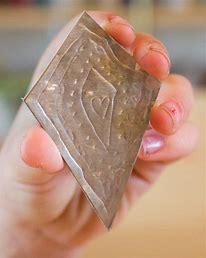
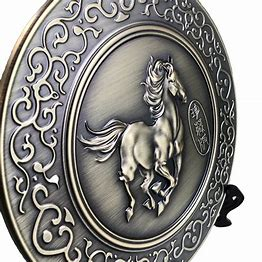
Embossed aluminum pendants are a fantastic way to create unique, lightweight jewelry with a beautiful, textured design. You can make them easily using aluminum sheets, which can be embossed to create intricate patterns or images. Here’s a step-by-step guide to making your own embossed aluminum pendants:
Materials Needed:
- Aluminum sheets (thin gauge, like 36-40 gauge, available at craft stores)
- Embossing tools (such as ballpoint stylus or embossing pens)
- Stencil or design template (optional, for pattern inspiration)
- Scissors (to cut aluminum)
- Pliers (for shaping)
- Jewelry findings (such as jump rings, chains, or bail to hang the pendant)
- Sharpie or permanent marker (optional, for adding color to the design)
- Adhesive (optional) for added details or to secure the design.
- Ruler and pencil (for measuring and marking)
Instructions:
1. Prepare the Aluminum Sheet:
- Cut a piece of aluminum sheet into the size and shape you want for your pendant. You can make it square, round, or any other shape you like. A typical size for a pendant is around 1-2 inches in diameter.
- Use scissors or a craft knife to carefully trim the aluminum sheet.
2. Choose or Create a Design:
- You can either draw your own design or use a stencil/template. If you’re just starting, you may want to use simple designs like swirls, flowers, geometric shapes, or even a personalized initial.
- Place the stencil or your drawing under the aluminum sheet, or lightly trace the design with a pencil onto the aluminum.
3. Emboss the Design:
- Use embossing tools to start creating the design. Start by gently pressing the ballpoint stylus or embossing pen on the back of the aluminum sheet, working from the outline of the design inward.
- Apply light pressure as you emboss the design. The goal is to create raised areas on the front of the pendant. You can create various textures and patterns by varying the pressure and speed of your embossing tool.
- If you’re using a template, you can also press the design firmly onto the aluminum, and then trace over it with your stylus.
- Optional: Use a light source (like a lamp or flashlight) from behind to help you see the raised areas more clearly.
4. Add Color (Optional):
- If you want to add color to your embossed design, you can use a permanent marker or Sharpie to fill in the embossed areas. This can make the raised parts pop out more. Let the marker dry for a few minutes, and then use a soft cloth or paper towel to gently wipe off any excess ink, leaving the color in the textured design.
5. Shape the Pendant:
- If you want a specific shape, you can use pliers or a jewelry mandrel to bend or shape your pendant. You can add gentle curves or even create a slight 3D effect by gently lifting areas of the pendant.
- If you’d like to make your pendant into a frame or have more structure, you can fold the edges to create a border around the design.
6. Create a Hole for Hanging:
- Use a hole punch or a small drill to make a hole at the top of your pendant. This will allow you to thread it onto a chain or cord.
- Be careful when punching the hole to ensure it’s big enough for your jewelry findings (like a jump ring) but not too close to the edge.
7. Attach Jewelry Findings:
- Once the pendant is ready, use jump rings to attach it to a chain or cord for wearing.
- If you’re using a bail (a small loop used to hold the pendant), glue the bail to the back of the pendant with strong adhesive, ensuring it aligns properly.
8. Finishing Touches:
- If you’d like to give your pendant a polished finish, you can gently rub the surface with a fine sandpaper or steel wool to smooth out any rough edges.
- Alternatively, you can leave it with a more natural, rustic texture.
Tips:
- Experiment with Designs: Don’t be afraid to experiment with different patterns, like intricate swirls, leaves, or geometric designs.
- Practice: If you’re new to embossing, try practicing on a scrap piece of aluminum to get the feel of the tools.
- Create a Set: You can make matching earrings or bracelets by embossing similar designs on smaller aluminum pieces.
- Seal the Design: If you want to keep the color vibrant, you can apply a clear coat of sealant to the pendant after you’re done decorating. This will help preserve the look and prevent wear over time.
Final Thoughts:
Creating embossed aluminum pendants is a fun way to add a personal, artistic touch to your jewelry collection. Whether you’re making a gift for someone special or creating something unique for yourself, the possibilities are endless with aluminum, embossing tools, and a little creativity!
12. Fruit Pizza
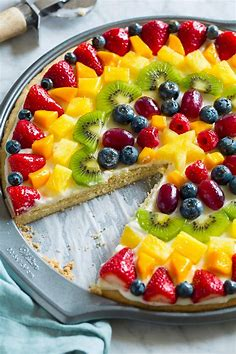
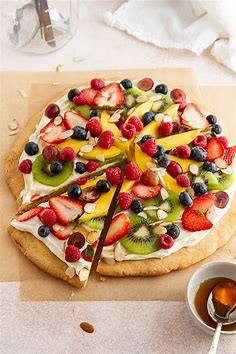
Fruit pizza is a fun, colorful, and refreshing dessert that’s perfect for any occasion. It’s made with a sweet cookie dough base, topped with cream cheese frosting, and decorated with a variety of fresh fruit. Here’s a simple recipe to make your own delicious fruit pizza:
Ingredients:
For the Base:
- 1 package of sugar cookie dough (or homemade sugar cookie dough)
- If you’re making homemade dough, you will need:
- 1 ¾ cups all-purpose flour
- ½ cup unsalted butter, softened
- 1 cup sugar
- 1 large egg
- ½ tsp vanilla extract
- ½ tsp baking powder
- A pinch of salt
For the Cream Cheese Frosting:
- 8 oz cream cheese, softened
- ¼ cup butter, softened
- 1 cup powdered sugar
- 1 tsp vanilla extract
For the Toppings:
- Fresh fruits (such as strawberries, blueberries, kiwi, bananas, pineapple, grapes, raspberries, or peaches)
Instructions:
1. Prepare the Cookie Base:
- If using store-bought sugar cookie dough, roll it out on a baking sheet lined with parchment paper according to the package instructions. Alternatively, if you are making homemade dough, combine all the dough ingredients in a bowl and mix until smooth.
- Roll the dough into a circle (about 12 inches in diameter) on the parchment paper. You can also roll it into a rectangular shape if you prefer.
- Bake according to the package instructions for store-bought dough, or if you’re making your own, bake at 350°F (175°C) for 10-12 minutes or until the edges are lightly golden.
- Let the cookie base cool completely on a wire rack before adding the frosting.
2. Make the Cream Cheese Frosting:
- In a mixing bowl, beat the softened cream cheese and butter together until smooth and creamy.
- Add the powdered sugar and vanilla extract and continue mixing until the frosting is light and fluffy.
3. Assemble the Fruit Pizza:
- Once the cookie base has cooled, spread the cream cheese frosting evenly over the top using a spatula. Be sure to cover the entire surface, leaving a small border around the edges.
4. Top with Fresh Fruit:
- Arrange the fresh fruit on top of the frosting. You can get creative with patterns—such as making a rainbow design or simply scattering the fruit randomly. Make sure to use an assortment of vibrant fruits to give your fruit pizza a colorful look.
5. Serve:
- Once your fruit pizza is assembled, slice it into wedges like a pizza and serve immediately. For the best results, it’s best to eat it the same day, as the cookie base can become soft over time.
Tips:
- Fruit Prep: If you’re using fruits like strawberries or bananas, slice them just before serving to prevent them from getting soggy.
- Customization: You can make your fruit pizza seasonal by using fruits that are in season, or create a theme (e.g., red, white, and blue for a patriotic design).
- Cookie Base Alternatives: If you prefer a gluten-free version, you can substitute the sugar cookie dough with a gluten-free dough. You could also try using a graham cracker crust for a different base.
- Drizzle: For an extra touch, drizzle honey, chocolate sauce, or caramel over the top of the fruit before serving.
Final Thoughts:
Fruit pizza is a versatile and visually appealing dessert that’s sure to be a hit at parties, barbecues, or family gatherings. It’s not only delicious but also a fun way to enjoy fresh fruit in a creative and sweet way! Enjoy!
13. Soda Bottle Cartesion Diver.
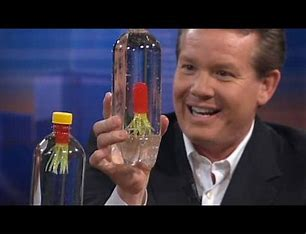
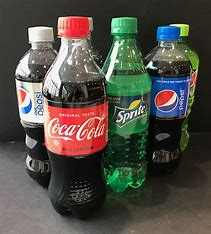
A Soda Bottle Cartesian Diver is a fun and simple science experiment that demonstrates the principles of buoyancy and pressure. It uses a plastic soda bottle, a small object (like a plastic diver), and water to create a “diving” effect when you apply pressure to the bottle. Here’s how to make your own Soda Bottle Cartesian Diver!
Materials Needed:
- 1 Plastic soda bottle (2-liter size works best)
- Water (to fill the bottle)
- 1 Plastic pipette, eye dropper, or small plastic toy diver (something that can float but sink when pressure is applied)
- Plastic straw or a small straw piece (optional)
- Clay or modeling putty (to weigh down the diver)
- Food coloring (optional, for decorative purposes)
Instructions:
1. Prepare the Diver:
- If you’re using a plastic pipette or eye dropper, you’ll need to weigh it down so it can sink when pressure is applied to the bottle.
- To do this, attach a small piece of modeling clay or putty to the end of the pipette or diver. Add just enough to make the diver float at the top of the water when placed in the bottle, but not sink.
- If using a small plastic toy or other diver, make sure it’s small enough to float at the top of the bottle. Attach clay to the bottom so it sinks when pressure is applied.
2. Fill the Bottle with Water:
- Fill the plastic soda bottle almost to the top with water. Leave about an inch or two of space at the top to allow room for pressure to build.
- If you want to make it colorful, add a few drops of food coloring to the water.
3. Insert the Diver:
- Place the diver (the pipette, toy, or object) inside the bottle with the water. The diver should float when you first place it in, but not rise too much to the surface.
- Close the lid tightly on the bottle to prevent water from leaking out.
4. Test the Diver:
- Gently squeeze the sides of the bottle. As you apply pressure to the bottle, you’ll notice the diver sink into the water. When you release the pressure, the diver will rise back to the top of the bottle.
- The diver moves up and down because of the change in pressure inside the bottle. When you squeeze the bottle, the pressure forces water into the pipette or diver, causing it to sink. When you release the pressure, the air inside the diver expands and it rises again.
How It Works:
The Cartesian Diver works based on Archimedes’ principle and Boyle’s law:
- Archimedes’ Principle: An object will float if the amount of water it displaces is equal to its weight. In this experiment, the diver floats when the amount of air inside it gives it the right buoyancy.
- Boyle’s Law: The pressure inside the bottle affects the volume of air inside the diver. When you squeeze the bottle, the air in the diver is compressed, making it denser than water and causing it to sink. When you release the pressure, the air inside the diver expands again, making it less dense than water and causing it to float back up.
Additional Notes:
- If the diver doesn’t sink or float as expected, try adjusting the amount of clay on the diver. You need to find the right balance of weight and buoyancy.
- The Cartesian Diver works best with a plastic bottle because it can easily handle the pressure from squeezing.
- You can decorate the bottle and diver to make it look like a fun fish or underwater scene!
Final Thoughts:
The Soda Bottle Cartesian Diver is an engaging way to teach kids about buoyancy, pressure, and basic physics. It’s easy to make, requires few materials, and is a fun way to explore scientific concepts hands-on! Enjoy experimenting with your very own diving diver.
14. Newspaper Structure
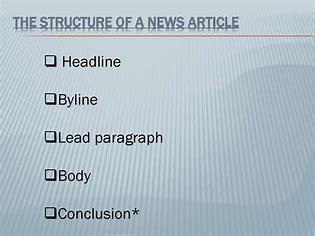
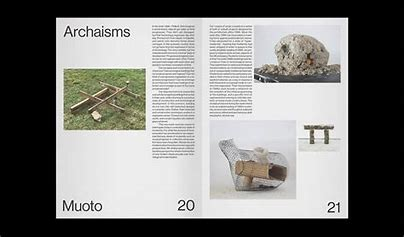
A newspaper structure refers to the way a newspaper is organized and arranged to present news, articles, and information clearly and effectively. Understanding the structure of a newspaper is important whether you’re reading, writing, or designing one. Here’s an overview of the typical components and layout of a newspaper:
Key Components of a Newspaper Structure:
1. Headline:
- Purpose: The headline is the large, bold text at the top of an article or story. It’s designed to grab the reader’s attention and give a brief idea of the story’s topic.
- Placement: Found at the very top of the article, it stands out to make the story eye-catching.
2. Subheadline:
- Purpose: The subheadline is a secondary title that provides more details or context to the headline. It’s smaller than the headline but still important in providing more information to the reader.
- Placement: Positioned right under the headline.
3. Byline:
- Purpose: The byline tells the reader who wrote the article. It often includes the reporter’s name and may also include the date of publication.
- Placement: Usually located beneath the headline or at the beginning of the article.
4. Lead (or Lede):
- Purpose: The lead is the opening paragraph of the article, designed to summarize the most important aspects of the story. It answers the basic questions: who, what, when, where, why, and how.
- Placement: At the beginning of the article.
5. Body of the Article:
- Purpose: The body expands on the information provided in the lead, offering more in-depth details, background, and context. It can include quotes, statistics, and analysis.
- Placement: The main section of the article, following the lead.
6. Dateline:
- Purpose: A dateline is a line that tells the reader where and when the story was written or reported. It includes the city and sometimes the country, followed by the date.
- Placement: Typically at the start of the article, before the byline.
7. Images and Captions:
- Purpose: Newspapers often include photographs, illustrations, or graphics to support the story or make it more visually appealing. The caption explains the image or provides context.
- Placement: Images are usually placed beside or below the article, with captions underneath.
8. Columns:
- Purpose: Articles are often arranged into columns, allowing multiple stories to fit on the same page and making it easier to read. Columns are vertical sections of the page where the text is aligned.
- Placement: Each article or story typically spans one or more columns.
9. Editorial and Opinion Section:
- Purpose: This section contains editorials, opinion pieces, and letters to the editor. It provides viewpoints, perspectives, and analyses of current events.
- Placement: Typically in a separate section, often towards the middle or end of the newspaper.
10. News Sections:
- Purpose: Newspapers are often divided into different sections based on the type of news they cover. Common sections include:
- Front Page: The most important or breaking news stories.
- Local News: Stories relevant to the local community.
- International News: World events and news from other countries.
- Business: Economic updates, stock market news, and industry reports.
- Sports: Information on games, scores, and athlete profiles.
- Entertainment: Celebrity news, movies, music, and TV shows.
- Lifestyle: Health, fashion, travel, and food articles.
11. Classified Ads:
- Purpose: This section includes small advertisements for jobs, housing, services, and items for sale. These ads are typically organized by category.
- Placement: Usually towards the back of the newspaper.
12. Weather Section:
- Purpose: Provides information on the weather forecast, including temperature, precipitation, and other weather conditions.
- Placement: Can be found in a separate section or integrated with the local news section.
13. Crossword, Puzzles, and Comics:
- Purpose: Many newspapers include entertainment content like puzzles, Sudoku, or comic strips to engage readers during leisure time.
- Placement: Typically towards the back pages.
14. Table of Contents / Index:
- Purpose: Some newspapers include a table of contents or an index to help readers quickly locate articles or sections.
- Placement: Typically on the first page or in a designated section.
Newspaper Layout:
The layout of a newspaper is designed to prioritize content and readability. Here’s an overview of the common layout used:
- Front Page: The front page usually includes the most significant stories, headlines, and images of the day.
- Page Numbering: Pages are numbered for easy navigation.
- Columns and Gutter: Articles are placed in columns with space (gutter) in between. This helps readers follow the text easily.
- Balance of Text and Visuals: A mix of text, images, and ads ensures the newspaper is visually appealing and informative.
- Headlines and Subheadings: Larger headlines draw attention to important stories, and subheadings break down articles into smaller, digestible parts.
Final Thoughts:
The structure of a newspaper is essential to ensure that readers can easily find and understand the information they are looking for. From headlines and leads to sections and columns, each part of the newspaper is carefully organized for clarity and efficiency. Whether you’re reading the news or considering writing for a newspaper, understanding this structure helps you navigate the content effectively.
15. DiY Hexbug Nano.
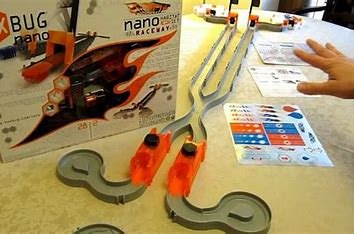
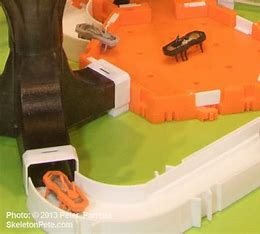
A DIY Hexbug Nano is a fun project where you can create a working, tiny robotic insect similar to the popular Hexbug Nano toys. These robotic critters are designed to mimic the movements of real bugs by using vibrations and motors to move around. Building your own Hexbug Nano is a great way to learn about basic electronics and robotics while creating a cool, interactive toy.
Here’s how you can make your very own DIY Hexbug Nano:
Materials Needed:
- Vibration motor (commonly found in toys or small electronics)
- Battery (like a small button cell battery or AA battery, depending on your motor)
- Paperclip or small wire (for the legs and body structure)
- Tape or glue (for assembly)
- Electrical tape or copper tape (to connect wires)
- Hot glue gun (optional, for a sturdy build)
- Cardboard or plastic sheet (for the body casing)
- Small screws or nails (optional, for legs)
Instructions:
1. Create the Body Structure:
- Use a small piece of cardboard or a plastic sheet to create the body of the Hexbug Nano. You can make it a simple rectangular or cylindrical shape, but the body should be compact, lightweight, and able to hold the motor and battery in place.
- The size should be small enough to allow the motor to fit inside but large enough to support the legs and components.
2. Prepare the Vibration Motor:
- If you’re using a vibration motor, you’ll need to attach it securely to the body. These motors are often found in small toys, cell phones, or electronic devices. They create vibrations when powered on and are the key component that gives the Hexbug Nano its movement.
- Test the motor by briefly connecting it to the battery to make sure it works. It should vibrate when connected.
3. Create the Legs:
- For the legs, you can bend a paperclip or use small pieces of wire. You need at least 3-6 legs for stability.
- Cut and bend the wire or paperclip to create a set of legs that will touch the ground when placed on a flat surface.
- Attach these legs to the body by using glue, tape, or small screws. The legs should be spaced out evenly around the body to help the Hexbug Nano move smoothly.
4. Connect the Motor to the Battery:
- Attach the vibration motor to the body using glue or tape so it’s stable.
- Now, connect the motor’s wires to the battery. Use electrical tape or copper tape to securely attach the motor wires to the battery terminals.
- Make sure the connection is firm but easy to disconnect when you want to turn the motor off.
Tip: You might need a simple switch to control when the motor turns on and off. This can be a piece of tape that touches the wires or a small physical switch.
5. Test the Movement:
- Once everything is connected, turn on the motor by completing the circuit with the battery. If everything is set up properly, your Hexbug Nano should start vibrating and moving in random directions.
- The movement of the motor causes the legs to move and the body to shake, allowing your DIY robot to scuttle around just like the real Hexbug Nano.
6. Fine-tune the Design:
- If the Hexbug Nano doesn’t move as expected, try adjusting the legs. If they’re too short or too long, the robot might tip over or not move well.
- You can add more legs or adjust their placement to improve the balance and movement.
- You might also want to experiment with different motor speeds or types for different movement patterns.
7. Decorate the Hexbug Nano (Optional):
- You can decorate your DIY Hexbug Nano by adding colors or designs to the body using markers or stickers. You can even add googly eyes for extra fun!
Final Thoughts:
Building a DIY Hexbug Nano is an excellent project for learning basic principles of robotics and electronics. You’ll understand how small motors work and how vibrations can lead to movement. Plus, you get to create a cute and functional little robot! This project is a great way to experiment and improve on your design, so feel free to try different motors, leg configurations, or even materials for the body. Have fun with it!
16. Field Cast Animal Tracks.
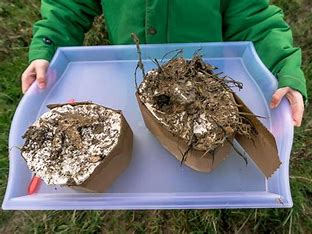
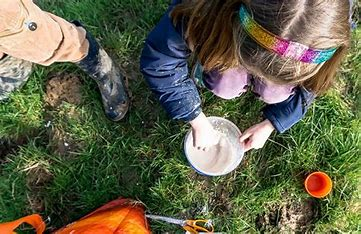
Field Cast Animal Tracks is a fun and educational project that allows you to create plaster casts of animal footprints you find outdoors. It’s a great way to explore wildlife, learn about animal behavior, and study different species by preserving their tracks. You can make your own animal track cast using a few simple materials. Here’s a step-by-step guide to help you create your own field cast animal tracks.
Materials Needed:
- Plaster of Paris (or another casting material like Quick Set Plaster)
- Water
- A small container or mixing bowl
- Stirring stick or spoon
- Plastic or wax paper (to protect the area where you’ll pour the plaster)
- Trowel or spoon (for smoothing the plaster)
- Animal tracks (you can find these in mud, sand, snow, or soft soil)
- Optional: Baby powder or cooking spray (to help release the cast)
Instructions:
1. Find Animal Tracks:
- Look for animal tracks in areas where wildlife is active, such as in mud, sand, soft dirt, or snow. Try to find a well-preserved print that’s clearly defined and deep enough to capture details. Some animals that leave distinguishable tracks include deer, raccoons, foxes, coyotes, and small mammals.
- Make sure to take note of where the tracks are located to avoid disturbing the area and to prevent accidental damage to the print.
2. Prepare the Track:
- Once you’ve found a track you’d like to cast, check to ensure it’s clear of debris (e.g., leaves, rocks, or sticks) that could interfere with the mold.
- If the ground is very soft (like wet mud), the print should already have enough depth to capture fine details. If it’s a drier area, gently press around the edges of the track to deepen it slightly if needed.
Optional Tip: If you’re worried about the plaster sticking to the track, lightly dust the track with baby powder or spray it with cooking spray to create a barrier.
3. Mix the Plaster:
- In your small container, mix Plaster of Paris with water according to the instructions on the package. Typically, the ratio is about 1 part water to 2 parts plaster, but check the packaging for exact measurements.
- Stir the mixture well until it has the consistency of thick pancake batter. It should be smooth and free of lumps.
4. Pour the Plaster into the Track:
- Once the plaster is ready, carefully pour it into the animal track. Start by pouring it slowly so that it fills the track evenly without spilling over the edges.
- Use a spoon or small trowel to gently smooth the surface of the plaster to ensure that it fills all the fine details of the print. Be careful not to disturb the track too much, as you want the mold to capture the shape as accurately as possible.
- If the track is particularly deep or complex, you may want to use a little extra plaster to ensure the track is fully covered.
5. Allow the Plaster to Set:
- Let the plaster set and harden. This usually takes about 15-30 minutes, depending on the type of plaster used. Be patient and avoid touching the cast during this time.
- You can check if it’s ready by gently tapping the plaster; if it feels firm and no longer soft, it’s ready to be removed.
6. Remove the Plaster Cast:
- Once the plaster has fully set, carefully lift the cast out of the track. If you’ve used baby powder or cooking spray, the cast should come out easily. Be gentle while removing it to avoid breaking or damaging the cast.
- If the cast is stuck, gently wiggle it back and forth to loosen it, but avoid using too much force. If the mold is delicate, you may need to break the surrounding earth around the cast to release it.
7. Let the Cast Dry:
- Once you’ve removed the cast, let it dry completely. This can take anywhere from a few hours to a full day, depending on the size of the cast and the type of plaster used.
- Once dry, you’ll have a durable, three-dimensional copy of the animal track.
8. Optional Finishing Touches:
- After your cast has fully dried, you can paint it or apply a clear coat of sealant to protect it.
- If you want to display the track, consider mounting it on a piece of wood or creating a small display stand for it.
Final Thoughts:
Making field cast animal tracks is a great way to preserve the fascinating prints left behind by wildlife. These casts make wonderful educational tools or keepsakes for nature enthusiasts. You can create a collection of different animal tracks and even use them to identify various species in your area. Additionally, this project provides a fantastic way to practice your observation skills and learn about the natural world around you!
17. Scrap Wood Stomp Catapult.
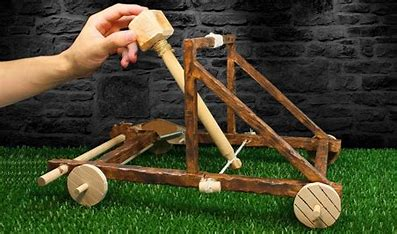
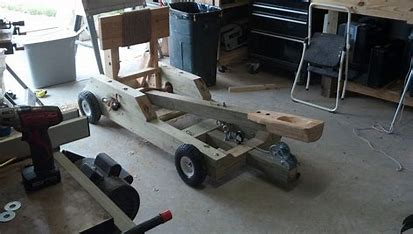
A Scrap Wood Stomp Catapult sounds like a fun and creative DIY project! Here’s how you can make one using scrap wood and simple materials:
Materials Needed:
- Scrap wood pieces (2-4 for the base and supports)
- 1 sturdy piece of wood for the arm (for launching)
- Nails or screws
- A rubber band or bungee cord (for tension)
- A small block of wood (for the stopper)
- Hot glue or wood glue (optional)
- Hammer or screwdriver
- A small cup or container (to hold the projectile)
Steps:
- Create the Base:
- Use two pieces of scrap wood to form the base. These will be placed parallel to each other, creating a sturdy platform for the catapult.
- Attach a third scrap wood piece across the top to give it structure, making a U-shape or rectangular frame.
- Prepare the Launch Arm:
- Take a long piece of scrap wood and cut it to the length that will serve as the launching arm.
- Drill a hole near one end of the arm (this will be where the arm pivots).
- The other end should have a small cup or container affixed to hold the projectile.
- Attach the Arm to the Base:
- Using a bolt, nail, or screw, attach the pivot point of the arm to the base, ensuring the arm can rotate.
- You may want to use a small block of wood as a stopper at the base where the arm will rest before being “stomped” or triggered.
- Add Tension Mechanism:
- Attach a rubber band or bungee cord to the end of the arm and secure it to the base or another piece of wood. This will create the tension needed for the catapult to launch the projectile when triggered.
- Test the arm to make sure it’s secure and can easily rotate.
- Trigger Mechanism:
- To trigger the catapult, you could create a “stomp” mechanism where you step on a lever or press a button that releases the tension in the rubber band or cord. Alternatively, the catapult could be activated by a simple pull cord.
- The lever could be a simple scrap piece of wood hinged to the base.
- Final Adjustments:
- Test the catapult with small objects like ping pong balls, small foam balls, or crumpled paper.
- Adjust the tension on the rubber band or cord for greater or lesser distance.
Fun Variations:
- Add a more elaborate trigger mechanism with a switch or lever if you want more control.
- Decorate it to give it a fun, personalized look.
- Try experimenting with different projectiles to see how the catapult performs.
This scrap wood stomp catapult can be both a functional and fun project that uses simple materials while offering a lot of room for creativity!
18. Glass Jar and Tissue Paper Luminaries.
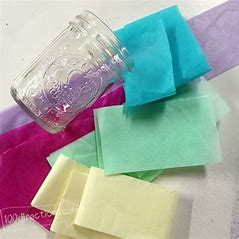
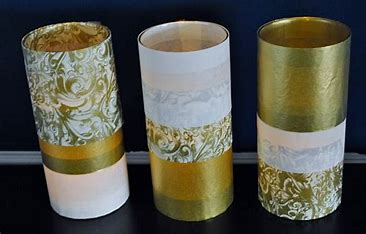
Glass jar and tissue paper luminaries are a simple and creative DIY project that can add a cozy, colorful, and personalized touch to any space. These luminaries are often used for parties, weddings, holidays, or to add a soft glow to outdoor settings.
Materials:
- Glass jars (mason jars, empty jam jars, or any small glass container)
- Tissue paper (brightly colored or patterned tissue paper works best)
- Mod Podge (or any glue that dries clear)
- Paintbrush or sponge brush
- Scissors
- Tea lights or small LED candles
- Ribbon, twine, or decorative items (optional for added flair)
Instructions:
- Prepare the Jars: Clean the glass jars thoroughly to remove any labels or sticky residue. Let them dry completely before starting.
- Cut the Tissue Paper: Tear or cut the tissue paper into small squares or strips. You can mix and match colors or use one solid color, depending on the effect you want to achieve.
- Apply Glue: Using a paintbrush or sponge brush, apply a thin layer of Mod Podge (or glue) to the outside of the jar. Start from the top and work your way down. Be generous with the glue, but make sure it’s not too thick.
- Attach Tissue Paper: Place the tissue paper onto the glued surface of the jar, gently pressing it into place. Overlap the edges slightly for a patchwork effect. Continue adding pieces of tissue paper until the entire jar is covered, or leave spaces for a more whimsical design.
- Smooth Out Creases: After all the tissue paper is in place, lightly brush over it with a thin layer of Mod Podge to seal the paper and smooth out any creases or bubbles. Let the glue dry for about 15–20 minutes.
- Add Final Touches: If you want to decorate your luminaries further, you can tie a piece of twine, ribbon, or lace around the neck of the jar. You could also glue on small embellishments like beads, buttons, or charms.
- Insert the Candle: Place a tea light or an LED candle inside the jar. If you’re using a real candle, be sure to keep an eye on it and never leave it unattended. LED candles are a safe alternative for a longer-lasting glow.
- Enjoy Your Luminaries: Once your luminaries are complete and dry, place them on tables, windowsills, or along walkways to create a beautiful glow.
This project is perfect for adding a personalized, decorative touch to any room or special occasion.
19. Edible Bread Sculptures
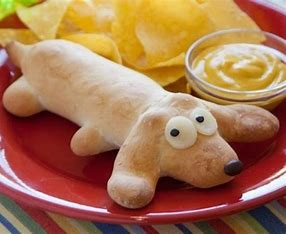
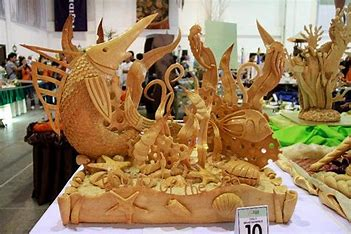
Edible bread sculptures are a creative and delicious form of art where bakers use bread dough to create intricate and artistic designs. These sculptures can range from simple shapes to highly detailed works, often blending elements of artistry and baking into a single masterpiece. Here’s a bit more about them:
Key Aspects of Edible Bread Sculptures:
- Dough Types:
- Bread Dough: The most common material, which can be made from yeast dough, sourdough, or enriched dough, depending on the desired texture.
- Sweet Dough: For more intricate and sweeter designs, like cinnamon rolls or other desserts.
- Gluten-Free Dough: For those with dietary restrictions, gluten-free bread dough can also be used for sculpting.
- Techniques:
- Basic Sculpture: Simple shapes like flowers, animals, or figures are made by shaping dough and allowing it to rise before baking.
- Detailed Sculptures: Some artists craft extremely detailed designs, such as life-sized people or animals, by meticulously shaping and adding different textures to the dough.
- Coloring: Food-safe dyes or natural ingredients like beetroot, spinach, or turmeric can be used to give color to the dough for a more vibrant sculpture.
- Baking and Finishing:
- Once shaped, the sculptures are baked. The oven’s heat gives the dough its final form, often adding a beautiful golden-brown color.
- Some artists also use glazes or egg wash for a glossy finish.
- Uses:
- Decorative Pieces: Bread sculptures are often used as centerpieces for special occasions like weddings, festivals, or large events.
- Themed Sculptures: For holidays like Halloween or Christmas, sculptors may create themed characters or symbols.
- Edible Art Competitions: There are contests around the world where bakers and artists showcase their edible sculptures.
- Famous Examples:
- Sculpted Loaves: Some famous bakeries or events feature loaves of bread that have been transformed into art, such as realistic depictions of animals, people, or objects.
- Historical Bread Art: In the past, bread sculptures were sometimes created to commemorate special events or honor a person or occasion.
Edible bread sculptures combine creativity with a love of baking, and many bakers see it as both a challenge and a fun way to engage their audience. Do you have a favorite bread sculpture or a specific theme in mind that you’d like to see.
20. Waldorf Window Star
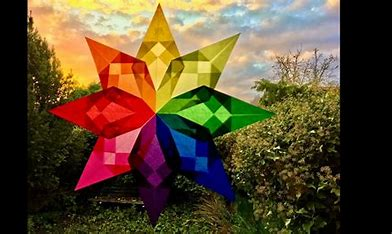
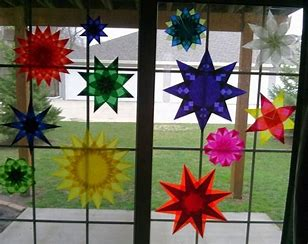
A Waldorf Window Star is a beautiful handcrafted ornament traditionally made in Waldorf education, a holistic educational philosophy that emphasizes creativity, nature, and the arts. These stars are commonly crafted from paper, often used to decorate windows during the holiday season or other special occasions. They embody both artistic expression and a connection to nature, which is a cornerstone of Waldorf philosophy.
Key Features of a Waldorf Window Star:
- Materials:
- While they can be made from various materials, the most common ones are colored paper or translucent paper. This allows the star to glow when placed in front of a light source, making it ideal for window decorations.
- Sometimes, these stars are made from natural materials like felt or fabric, especially for more rustic or handmade versions.
- Structure:
- A typical Waldorf Window Star has an intricate design that forms a multi-pointed star shape. The design often involves folding and cutting the paper to create a symmetric, layered look.
- The stars can have anywhere from 6 to 16 points, though 8-point stars are very common.
- The structure is often 3D, giving the star a sense of depth and dimension, making it especially striking when light shines through it.
- Crafting Technique:
- The process of making a Waldorf Window Star typically involves folding strips of paper into various shapes (usually triangles or other geometric forms) and then gluing them together in a radial pattern.
- The result is a star that appears to be composed of interwoven pieces, with intricate details visible from different angles.
- Many Waldorf educators and parents enjoy creating these stars with children, as it’s a fun and educational craft project that helps develop fine motor skills.
- Symbolism:
- The star is often associated with guidance, light, and hope. In Waldorf education, the star is used to help children connect with the changing seasons, and it’s particularly popular during Advent, leading up to Christmas.
- It represents the guiding light in the darkness, much like the stars in the night sky, making it both a comforting and meaningful symbol.
- Occasions for Display:
- Advent and Christmas: They are often made as part of Advent crafts, with a focus on celebrating the seasonal changes and the joy of light.
- Winter and Solstice: Waldorf Window Stars are also a lovely way to celebrate the winter solstice or other seasonal transitions, bringing a bit of light and beauty into the home during the darker months.
- General Decor: They can be hung in windows year-round, bringing a touch of artistic beauty and color to any room.
If you’re interested, I can help guide you through the steps of making your own Waldorf Window Star or give you more information on the history and variations of this craft. Would you like to try making one?